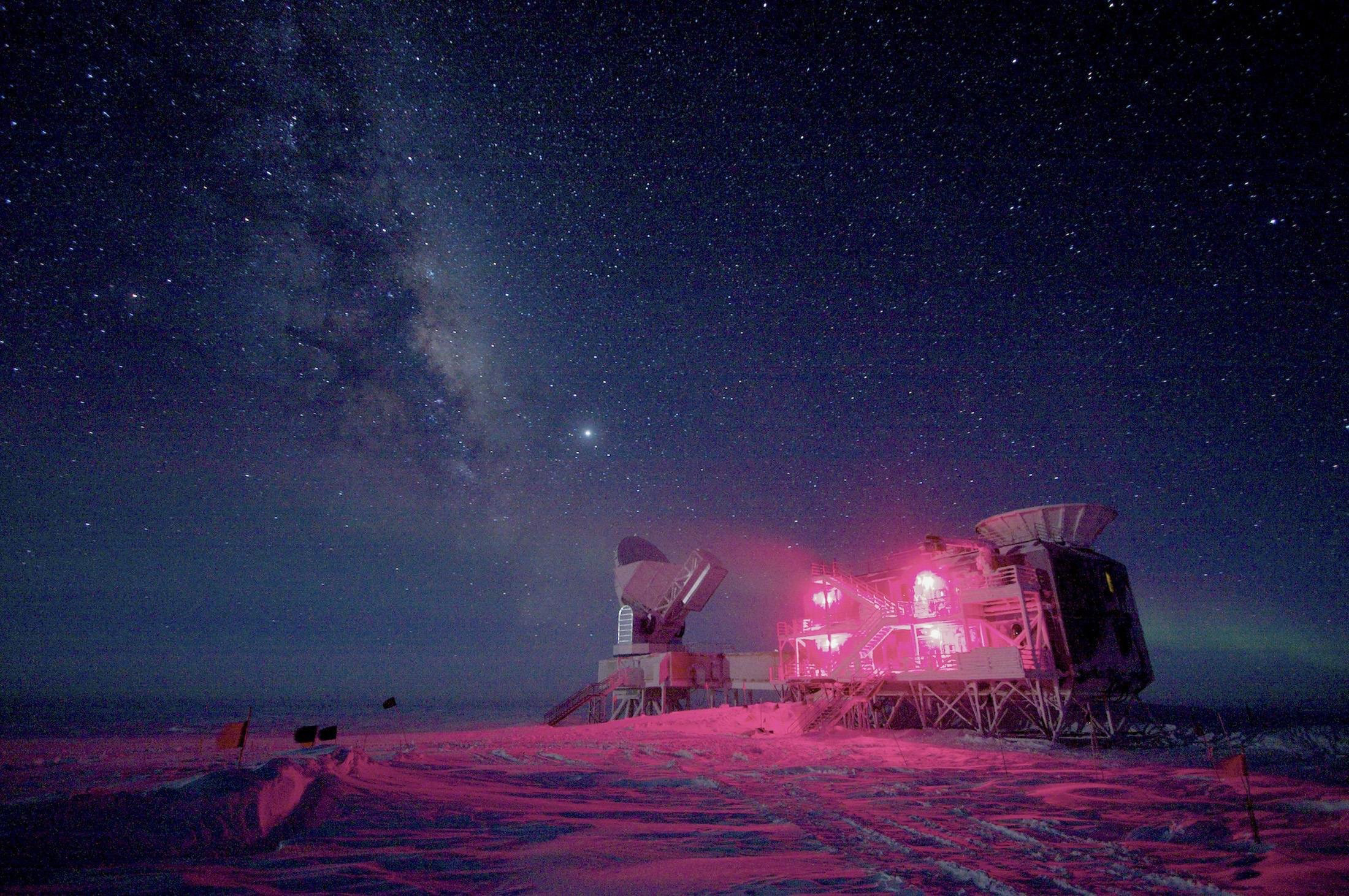
Time was, a picture of an infinitely tiny point could have been described with a simple caption: “The universe, actual size.” That’s clearly not the case anymore, and it’s close to unanimously accepted that what changed everything was a primal explosion known as the Big Bang, which occurred 13.8 billion years ago. Now a single observation has all but nailed down the Big Bang, eliminating the few other remaining scientific theories about how the universe began. In the bargain, it has also at last confirmed the existence of what are known as gravitational waves and the inflationary universe.
Gravitational waves were first described by Albert Einstein, who 99 years ago envisioned all space-time as a sort of cosmic fabric that could be warped and jiggled the way a trampoline can be set shaking by a dropped bowling ball. It was an elegant theory, but no one in the past century had been able to prove it. The inflationary universe was theorized in the 1980s by physicists who calculated that in the first billionth of a trillionth of a quadrillionth of a second after the Big Bang, the universe expanded so rapidly, it actually exceeded the speed of light.
If the right kind of jiggling could be spotted, it would prove both gravitational waves and the inflationary universe and buttress the Big Bang in the process. That’s exactly the observation made by a team of researchers headed by astrophysicist John Kovac of the Harvard-Smithsonian Center for Astrophysics.
“When I got the call, I had to ask if it was real,” says Marc Kamionkowski, a theorist at Johns Hopkins University who was not part of the Kovac group. Avi Loeb, chair of the Harvard astronomy department and also not involved in the study, believes that if the discovery holds up, “it’s worth a Nobel.”
Kovac and his colleagues didn’t see jiggling. What they saw instead, with the help of the Background Imaging of Cosmic Extragalactic Polarization 2, or BICEP2, instrument at the South Pole, was a distortion in the microwave radiation that pervades the cosmos. That seems innocuous, but it’s like seeing ripples in a pond, and these particular ripples were powerful enough that they likely came from an inflationary universe (check) that produced gravitational waves (check), which were set in motion by the Big Bang (check).
The work still has to be replicated by other researchers, which is always the case with science–especially science of this magnitude. But that validation should come quickly. Cosmologists at Princeton, Berkeley, the University of Minnesota and elsewhere were already doing similar work, and they plan to stay at it, now trying to confirm the Harvard-Smithsonian findings as opposed to making the discovery on their own.
Whether it’s correct or incorrect “will be known very quickly,” says Kamionkowski. When it is known–and when the findings are likely confirmed–the world will not change in the same way it did when smallpox was eradicated or the airplane was invented. But the universe–the entire 13.8 billion-year-old universe–will all at once become a more rational and fathomable place. Not a bad haul for a single observation.
More Must-Reads from TIME
- Cybersecurity Experts Are Sounding the Alarm on DOGE
- Meet the 2025 Women of the Year
- The Harsh Truth About Disability Inclusion
- Why Do More Young Adults Have Cancer?
- Colman Domingo Leads With Radical Love
- How to Get Better at Doing Things Alone
- Michelle Zauner Stares Down the Darkness
Write to Jeffrey Kluger at jeffrey.kluger@time.com